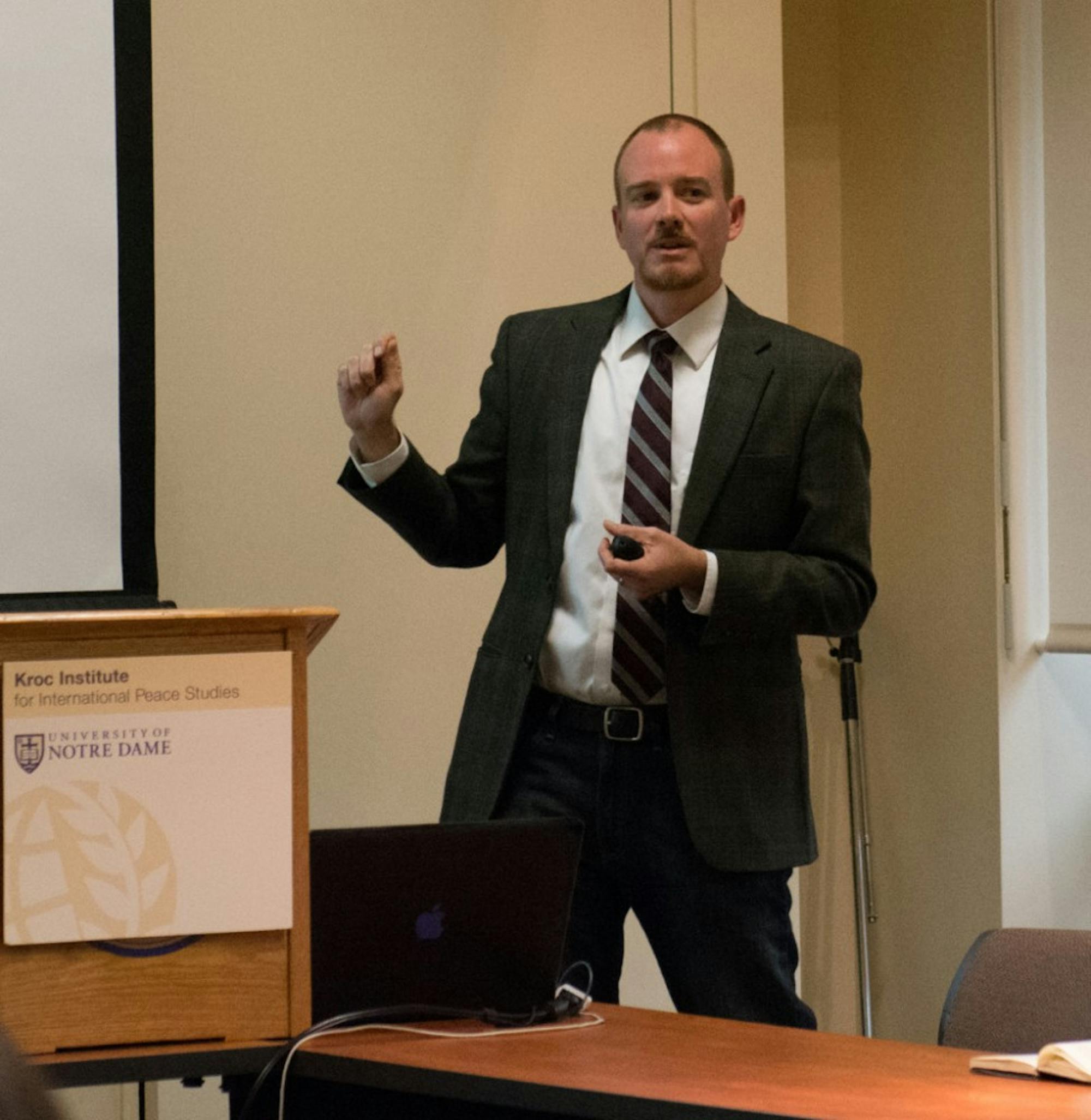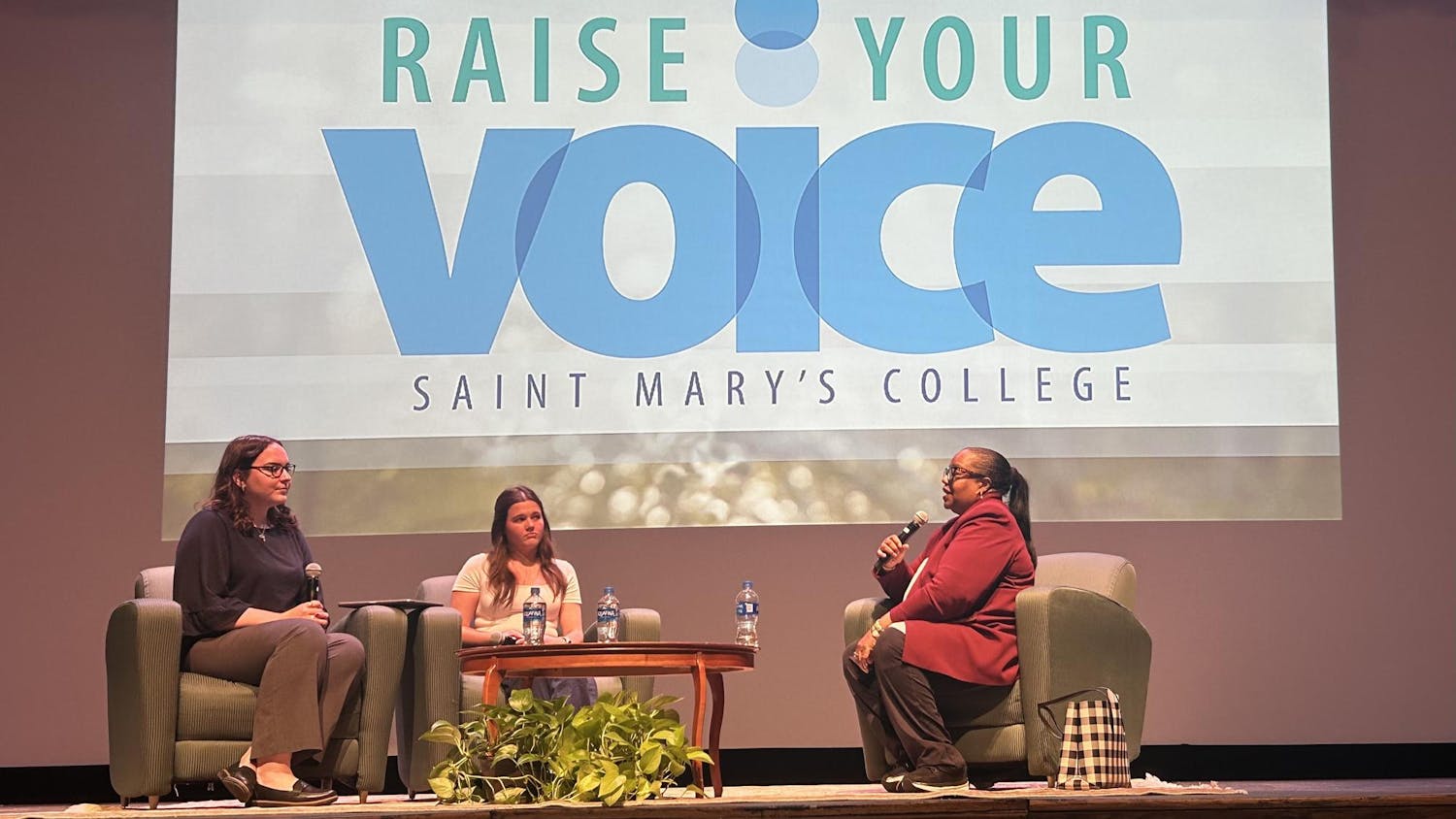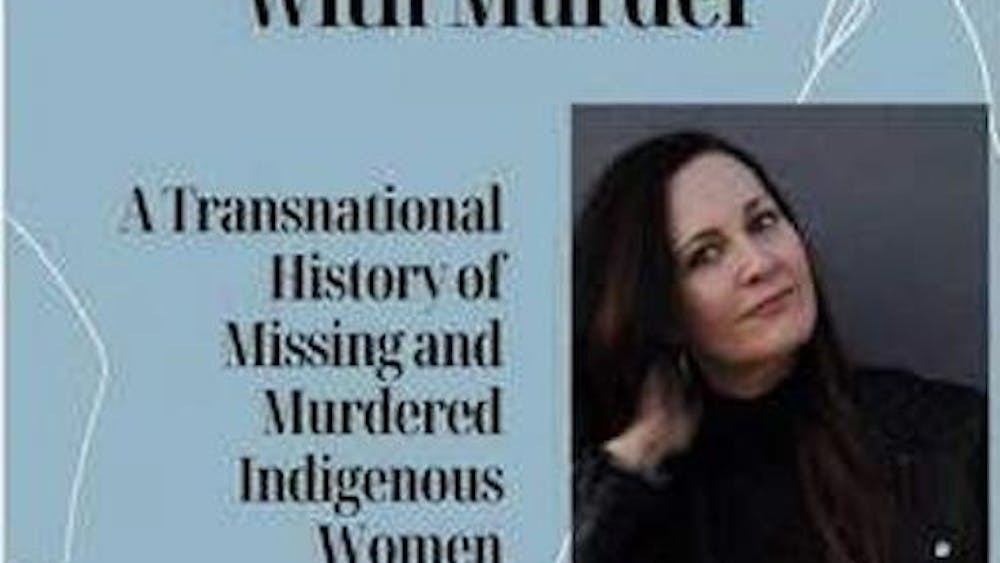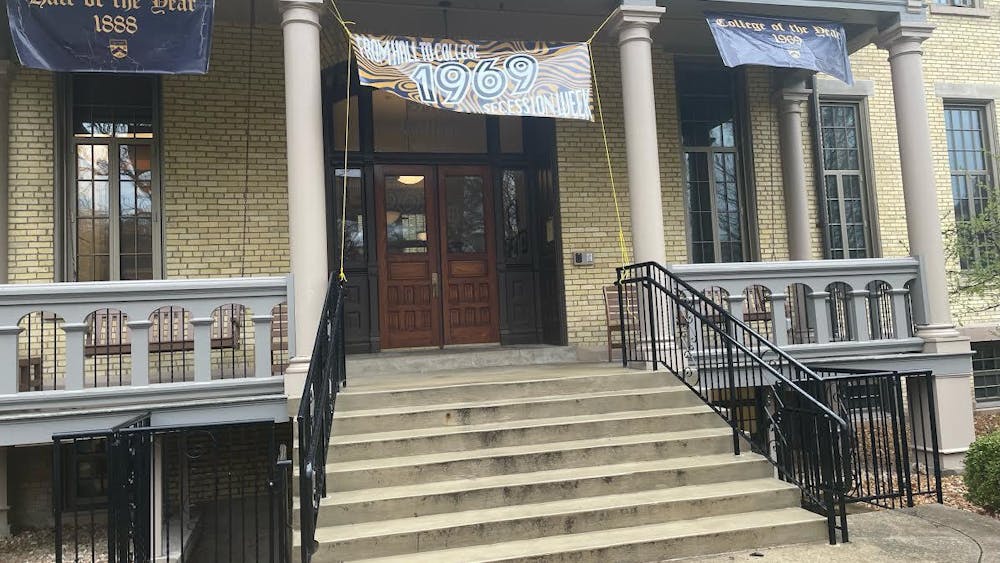Reed Wood, assistant professor of political science at Arizona State University’s School of Politics and Global Studies, discussed the role and impact of women in armed conflict in a lecture Tuesday at the Hesburgh Center for International Studies. His research is one of the first large-scale systematic data collection of women’s participation in combat.
“There is a large focus on war being men’s work,” Wood stated. “While occasionally women are seen as heroes, these stories are typically narrative accounts, in which the woman’s participation in war happens by chance, rather than her own decision.”
Using his research, Wood aimed to revise the perception of women in armed conflict, demonstrating their roles and the importance of these roles. His research focused on two questions: what factors contribute to women’s participation in rebel groups in insurgencies and what impact do they have on group behavior and conflict outcome?
To better understand what motivates women to enter into combat, Wood analyzed participation through two approaches. First, he looked at motivators that cause individuals to participate in combat. Next, he examined groups’ motivations for recruiting individuals. His findings showed that women, like men, typically join insurgency groups due to fear of violence and repression, revenge and the ideology of the group.
“In general, men and women join insurgency groups for the same reason on an individual level,” Wood said.
Finding this similarity, Wood examined female participation from the perspective of the group, by investigating what makes certain groups more likely to recruit women. On this level, Wood found that groups recruit women based on their demand for resources, tactical and strategic benefits and pre-existing ideologies.
“Women are less likely to be scrutinized in society, and are therefore often used in covert operations,” Wood said.
For this reason, terrorist groups are more likely to recruit women for operations like suicide bombings, in which the bomber must get close to the victim and remain unnoticed. Wood cited the Battle of Algiers, in which the National Liberation Front used women to plant bombs in crowded French cafes.
After discussing what factors motivated women to join and to be recruited to armed conflict, Wood explored the direct and indirect impact that women have on armed conflict.
In discussing the indirect impact that women have on conflicts, Wood highlighted the essentialist perspective approach, which focuses on the perceived inherent nature of women.
“There is a general argument that women are less aggressive and violent and more compassionate and caring than men,” Wood said.
Analyzing the impact of women through this essentialist perspective, Wood proposed that the inclusion of women in a group would make the group appear more favorable and less violent, consequently leading to earlier peace negotiations and help the group to gain more favor both nationally and internationally. Additionally, images of women in war can help to solicit international sympathy and alliances.
In this sense, the inclusion of women could act as a sort of propaganda, demonstrating the legitimacy of the group’s cause.
“It is hard to overstate the symbol of women in insurgent groups,” Wood said. “The inclusion of women can shape the public opinion, by demonstrating solidarity and legitimacy for the group.”
Within a country, the inclusion of women can also be used to shame men into joining the cause, Wood said.
“It send the message that if women are fighting, men should be fighting too,” he said.
In contrast to the power of the essentialist view of women, factors such as socialization, selection effects and compensation could limit the impact that women have on changing violent dynamics of a group, Wood said.
“In terms of selection effects, the women who show up to fight are the most likely to be more violent than other women,” he said.
Additionally, given that war is seen as “man's work,” women may feel the need to overcompensate and act more violently than men, Wood said. He concluded with the concession that the direct impact of women in combat is difficult to measure; however, although they are often overlooked, women greatly impact the outcome of conflicts.













